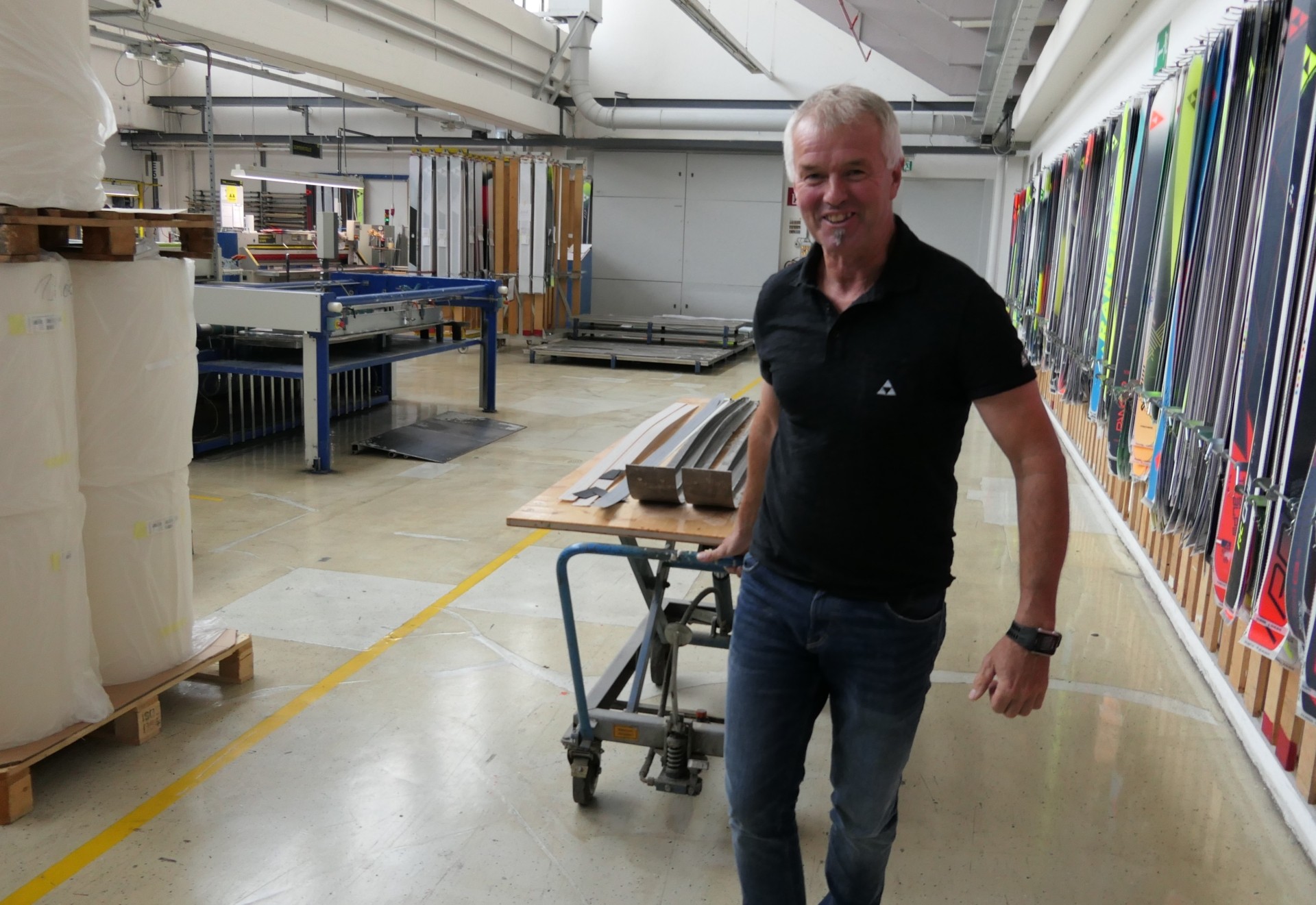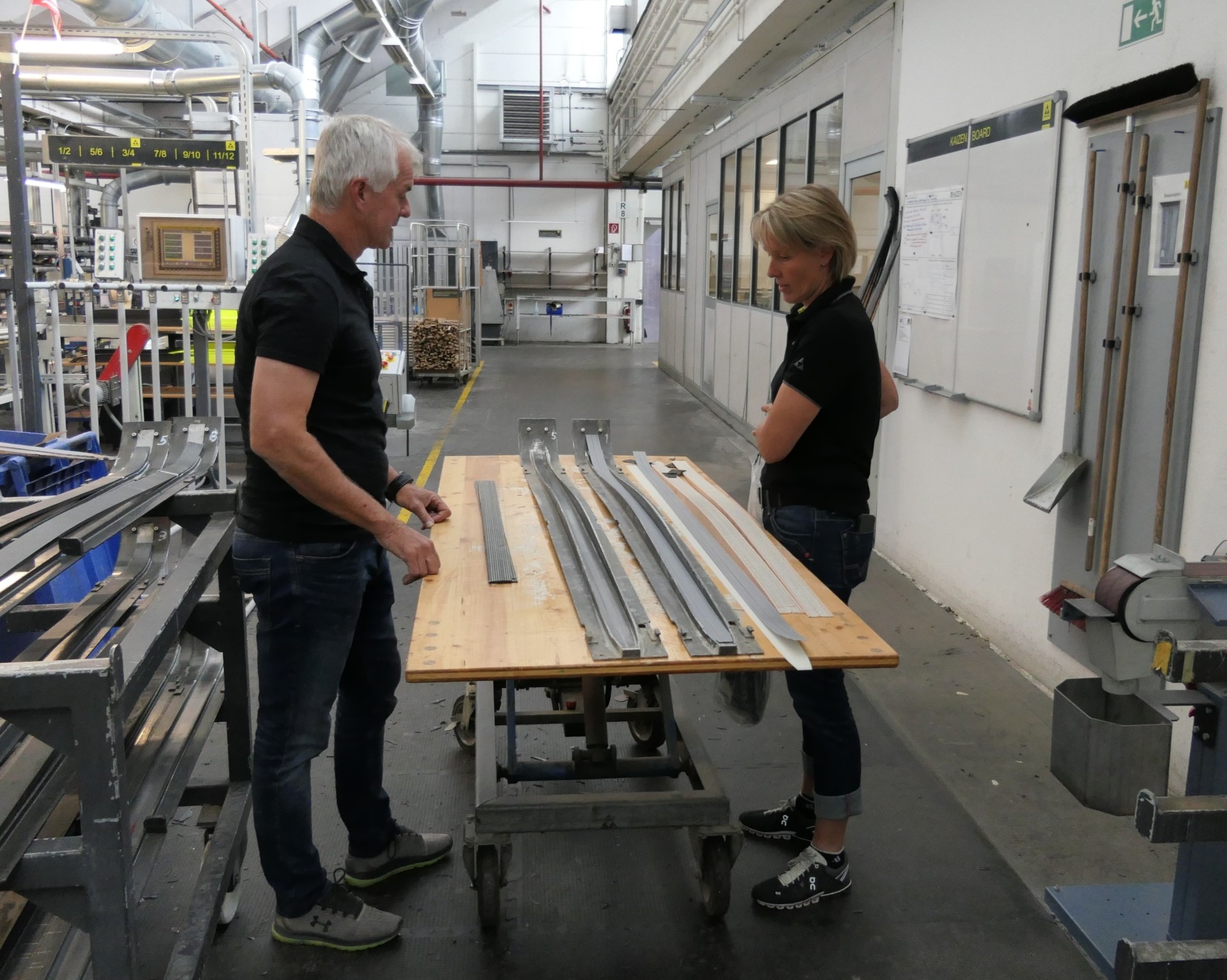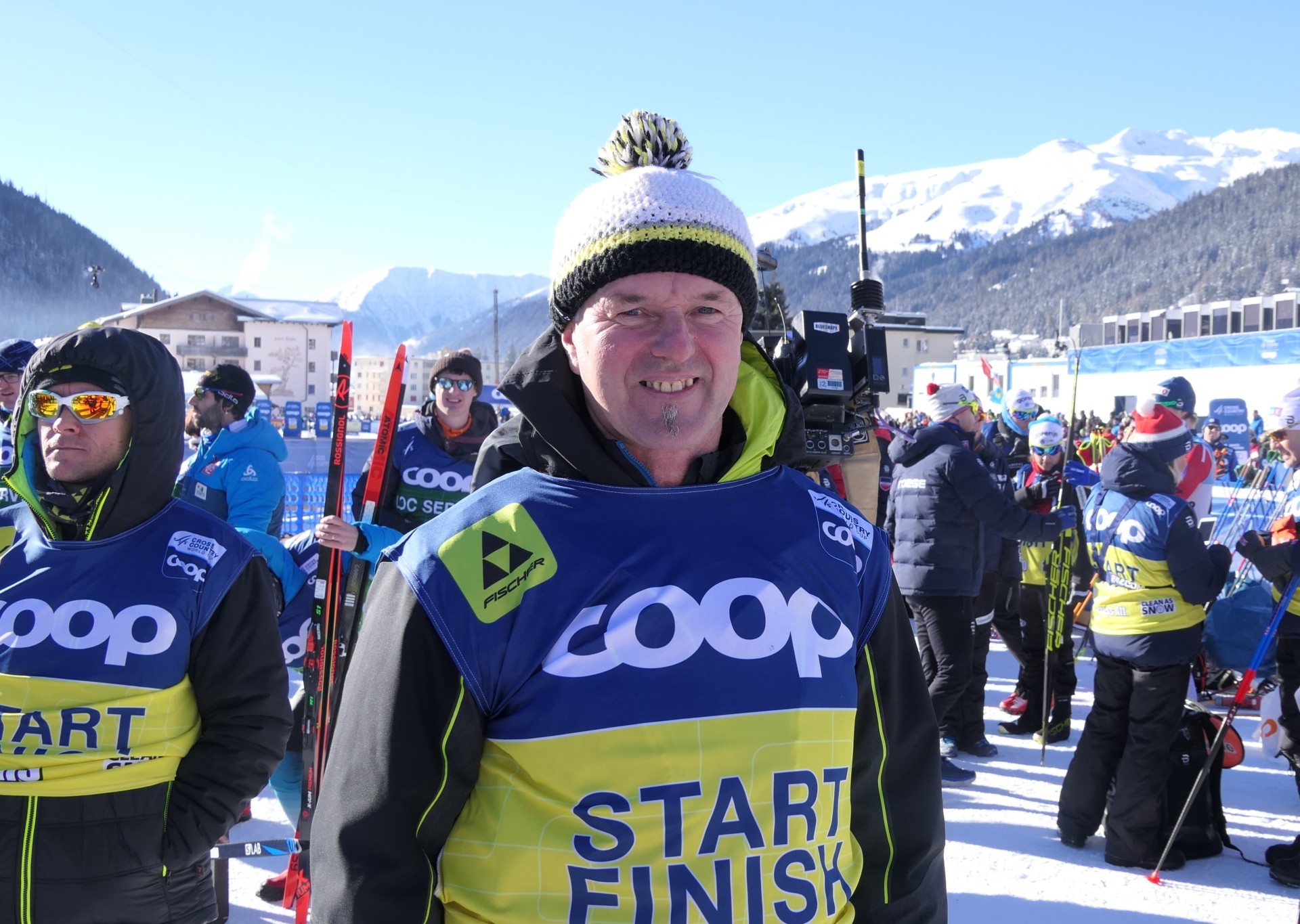

Hans Hubinger is a legend. The only reason he’s not a household name compared to, say, Marit Bjorgen or Dario Cologna, is the fact that in skiing names of equipment designers are not very well published & advertized. Something to learn from Formula 1 here, really.
Anyway, we are here to fill that gap. Here’s Hans’ ( very abridged) resume:
– Bridge-building engineer by training, has joined Fischer Sports in 1986. Yes, folks – that’s 32 years ago!
– Had participated in pretty much every Fischer skis’ development & design including such masterpieces ahead of its time as Fischer Revolution of 1990s
– Originator and chief designer of Speedmax and its Cold Base Bonding technology. BTW, Bjorgen and Cologna mentioned above won most their golds on Speedmaxes.

Today Hans takes a short break from his designer board to offer direct advise on something thousands upon thousands of ambitious skiers dwell upon every year: which Fischer skis / how many pairs to choose for one’s quiver . Tanja Winterhalder, Fischer Sports Marketing & PR Nordic and avid skier herself joins in in the conversation.

Hans Hubinger recommends:
For an aspiring amateur who wants to run Vasaloppet/Birkie/Marcialonga & finish in coveted first 1000:
– Go for Speedmax. In our tests they beat any other skis including Carbonlite.
– Your choice would depend on whether you feel strong enough to doublepole all the way.
– If were are talking kick-zone wax skis, the ones for long distance would always have to be more universal than those for the World Cup as they are many different track/snow conditions in the long race.
– 5 pairs should be sufficient, of which:
two Speedmax Classics one with 902 construction and another one with 812, cold and warm each for the total of 4 pairs.
– one pair of Zero Plus
Add Speedmax Doublepoling skis if you feel you could double pole all the way.
Twinskins – probably not – if you are an ambitious, goal oriented skier. They are great skis in training – use them there & then.
We are not offering C-Specials in classic any more- only in skating.
T.W. I went for Marcialonga this year on Classics with 902 construction – and they were perfectly waxed. I doublepoled for perhaps, 70% of the distance, the glide was great. But the last uphill is too hard to doublepole for me ( but not for elite skiers) – and that is when you need a kickzone wax that I luckily had on my skis.

What of professional skiers competing on shorter distances?
H.H. The numbers do not change significantly for an elite professional skier, competing in the World Cup: ideally one should have 5 pairs of classic and 5 skating skis. Too many pairs is also bad – you’d never select the best ones on the day. Well, ideally, with help, you should test more to find the best ones – but it’s quite enough to have
5 pairs on the day.
If you are an elite-level skier, to select or build the skis for you , I would need to have your weight, body build, how many kilometers do you ski per year in training – and then comes the most important part:
where is that you’re going to compete – flat distance? steep uphills? track with a lot of technical downwhills? The Alps, Scandinavia or elsewhere?
– You are making it rather clear, when you say “ skis build for you” that you’re talking about professionals vying for the World Championship medals. What about advanced amateurs? When would one be able to come here, to Fischer in Ried im Innkreis and have somebody help her or him select those 5 pairs of skis, as mentioned?
T.W. The system we built and are constantly working on improving is based on the notion that aspiring, ambitious skier does not need to come all the way to Ried – individualized selection of skis is a job of Fischer Nordic Racing Centers that are located around the world.

We train people who work in those centers here in Ried so they can combine the knowledge of Fischer products with their knowledge of local conditions.
What do you do if you’re an ambitious parent of a budding talent – and you are willing and able to spend on ski racing career of your child?
– T.W. You approach your local Fischer Racing Center as soon as she or he starts competing outside their clubs, which tends to happen roughly when they reach the age of 12.
